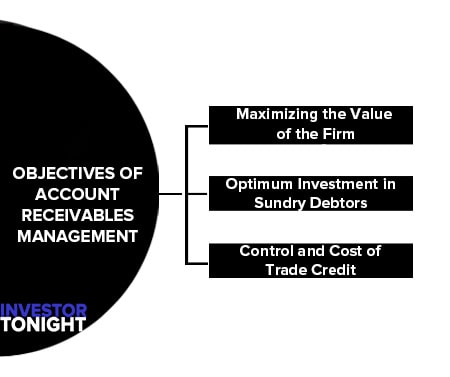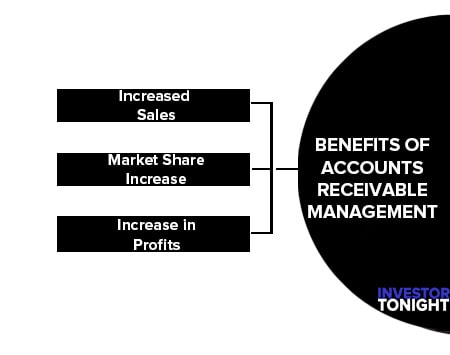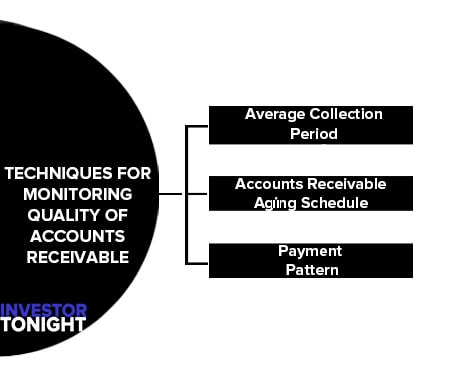What Account Receivables Management?
Accounts receivable is money owed to a firm when it sells its products or services on credit and it does not receive cash immediately.
Account Receivables occupy an important position in the structure of current assets of a firm. They are the outcome of rapid growth of credit sales granted by the firms to their customers. Credit sales are reflected in the value of Sundry Debtors [SD’s in India]. It is also known as Trade Debtors (TD’s), Accounts Receivable (BR’s) on the asset side of balance sheet. Trade credit is most prominent force of modern business.
Table of Contents
Objectives of Account Receivables Management
The following are the main objectives of accounts receivables management:
- Maximizing the Value of the Firm
- Optimum Investment in Sundry Debtors
- Control and Cost of Trade Credit

Maximizing the Value of the Firm
The basic objective of debtors’ management is to maximize the value of the firm by achieving a trade off between liquidity (risk) and return. The main purpose of receivables management is to minimize the risk of bad debts and not maximization of order. Efficient management of receivables expands sales by retaining old customers and attracting new customers.
Optimum Investment in Sundry Debtors
Credit sales expand, but they involve a block of funds, that have an opportunity cost, which can be reduced by optimum investment in receivables. Providing liberal credit increases sales consequently profits will increases, but increasing investment in receivables results in increased costs.
Control and Cost of Trade Credit
When there are zero credit sales, there will not be any trade credit costs. But credit sales increase profits. It is possible only when the firm is able to keep the costs at a minimum.
Costs of Accounts Receivables Management
Management of accounts receivables is not cost-free. The following are the main costs associated with accounts receivables management:
Opportunity Cost
Providing goods or services on credit involves a block of a firm’s funds. In other words, the increased level of accounts receivables is an investment in current assets. These blocked funds or investments in receivables need to be financed, by shareholders funds or from short-term borrowings.
They involve some cost. If receivables are financed by shareholder funds, there involves opportunity costs to shareholders. If they are financed by borrowed funds, it involves payments of interest, which is also a cost.
Collection Cost
Collection of receivable is on of the tasks of receivables management. Collection costs are those costs that are increased in collecting the debts from the customers to whom the credit sales have been granted.
The collection cost may include, staff, records, stationery, postage they are related to the maintenance credit department, and exposes details involved in collecting information about a prospective customer, from specialized agencies, for evaluation of prospective customer before going to grant credit.
Bad Debts
Sometimes customers may not be able to honor the dues to the firm because of the inability to pay. Such costs are referred as bad debts, and they have to be written of because they cannot be collected. These cost can be reduced to some extent, if the firm properly evaluates customer before granting credit, but complete avoidance is not possible.
Benefits of Accounts Receivable Management
The importance of accounts receivable management are:

Increased Sales
Providing goods or services on credit expands sales, by retaining old customers and attraction of prospective customers.
when the firm’s able to retain old customer and attract new customer automatically market share will be increased to the extent of new sales.
Increase in Profits
Increased sales, leads to increase in profits, because, it need to produce more products with a given fixed cost and sales of products with a given sales network, in both cost per unit comes down and the profit will be increased.
Techniques for Monitoring Quality of Accounts Receivable
There are three main techniques considered by this paper for monitoring the quality of accounts receivables and they are:

Average Collection Period
The Average Collection Period (ACP) represents the average number of days’ accrued debt, resulting from sales remains outstanding. Average collection period has two components, according to Graham, Scott (2010); the first components is when time sales is realized to the period the customer initiates payment. The second component deals with the receipt, processing and collection of the payment once initiated by the customer.
On the assumption that the receipt, processing and collection time is constant, then the Average Collection Period project to the firm, the number of days (on average) it takes customers to pay their debts (Graham et al, 2010).
The estimated average collection period may be used by the firm for trend analysis to compare the collection period over time. Secondly, it may be used to compare with the set target by the firm as well as comparing with the industry average. It is mathematically represented as shown below;
ACP = (Average accounts receivable x 365) / Credit sales
Accounts Receivable Aging Schedule
This method is used to monitor accounts receivable by segmenting receivables by their ages, thus the number of days outstanding using an aging schedule. It provides useful information about the state of a firm’s accounts receivable. Table 1 below provides an example of an aging schedule.
| Age of account | Receivable amount ($) | Percentage of Total Value |
|---|---|---|
| 0 – 10 days | 220,000 | 44.0 |
| 11 – 30 days | 166,500 | 32.002 |
| 31 – 60 days | 97,400 | 19.48 |
| 61 – 90 days | 22,500 | 4.50 |
| Beyond 90 days | 9,000 | 0.017 |
| Total Value | 500,000 | 100.0 |
Table 1 depicts that 76.02% of the firm’s accounts receivable are 30 days or less old. If the firm offers 30 days credit sales, then 23.98% of the receivables are past due.
The firm must figure out why much of its outstanding receivables are past due; are customers experiencing temporary financial difficulties? Are customers reluctant in paying due to issues with the product quality? Which customers will eventually pay and which receivables should be considered as bad and doubtful debt and even to be written off as bad debt expense.
Payment Pattern
Payment pattern is the trends customers usually follow in settling their debts. It is expressed as the percentage of total collection of sales made within the month. One approach to determine the payment pattern is to analyze the company’s sales and resulting collections on a monthly basis.
Thus, for each month’s sales, the firm computes the amount collected within the period and that of the subsequent months as well. Every business has a pattern in which its receivables are paid, if changes occur in the payment pattern, the firm should consider reviewing its credit policies.
By tracking these patterns over a period of time, the company can determine the average pattern of its collection using either spreadsheet or regression analysis. For most companies, these patterns tend to be fairly stable over time even as sales volumes fluctuate (Megginson, 2010).
Pricing administration, order processing and invoicing accuracy is of unique importance in management success. There are some basic practices that enhance pricing and invoicing accuracy. They include: Keeping the pricing policies clear and devoid of ambiguity; complex pricing structure complicates receivable management; for example, a large firm selling numerous different products whose prices change sporadically.
Read More Articles
- What is Financial Management?
- What is Financial Statements?
- What is Financial Statement Analysis?
- What is Ratio Analysis?
- What is Funds Flow Statement?
- What is Cash Flow Statement?
- What is Working Capital?
- What is Cost of Capital?
- What is Capital Budgeting?
- What is Dividend Policy?
- What is Cash Management?
- What is Depository?
- What is Insurance?
- What is Financial System?
- International Financial Reporting Standards
- Stability of Dividends
- What is Factoring?
- Determinants of Working Capital
- Public Finance
- Public Expenditure
- What is Public Debt?
- Classification of Public Debt
- Federal Finance
- Effect of Public Debt
- Expenditure Cycle